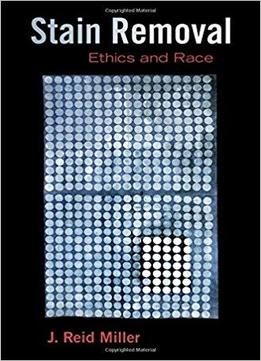
Stain Removal: Ethics And Race
by J. Reid Miller /
2017 / English / PDF
1.7 MB Download
Martin Luther King, Jr. famously expressed his dream that his children would "one day not be judged by the color of their skin, but by the content of their character." In his vision, a person's ethical qualities would be understood in spite of his or her body rather than through it.
In general, we think that a person's actions should not be judged according to their physical features, such as race. In fact, we see evaluations based on a subject's race or other bodily traits as illegitimate. But Stain Removal argues that our perception of a person's actions always entails judgments of the body. It therefore challenges modern moral theory's premise that a subject's deeds and not its bodily traits count as primary objects of evaluation. Drawing on modern and pre-modern accounts of how ethical knowledge originates, from the Biblical story of Ham, to Socrates, Immanuel Kant, Alain Locke, Frantz Fanon, Langston Hughes, Onora O'Neill, and Louis Althusser, the book suggests that our recognition of both a person and that person's deeds demands an evaluative context. From this it proposes that all perception is "evaluative perception."
Through the metaphor of the stain, J. Reid Miller traces the long history of thought suggesting that embodiments like race can and do signify ethical qualities. He argues that these qualities do not "attach" to subjects from the outside ― like a stain on innocent and unraced beings ― but are instead what allow us to see people as distinct ethical individuals. The objective of ethics, he shows, is not to determine whether race is good or bad but to illustrate how our "unique" personal traits emerge through our multiple relations to others. The consequence is that, contrary to King's vision, it is only through judgments of "skin" and other bodily features that the ethical "content" of subjects can be recognized.











